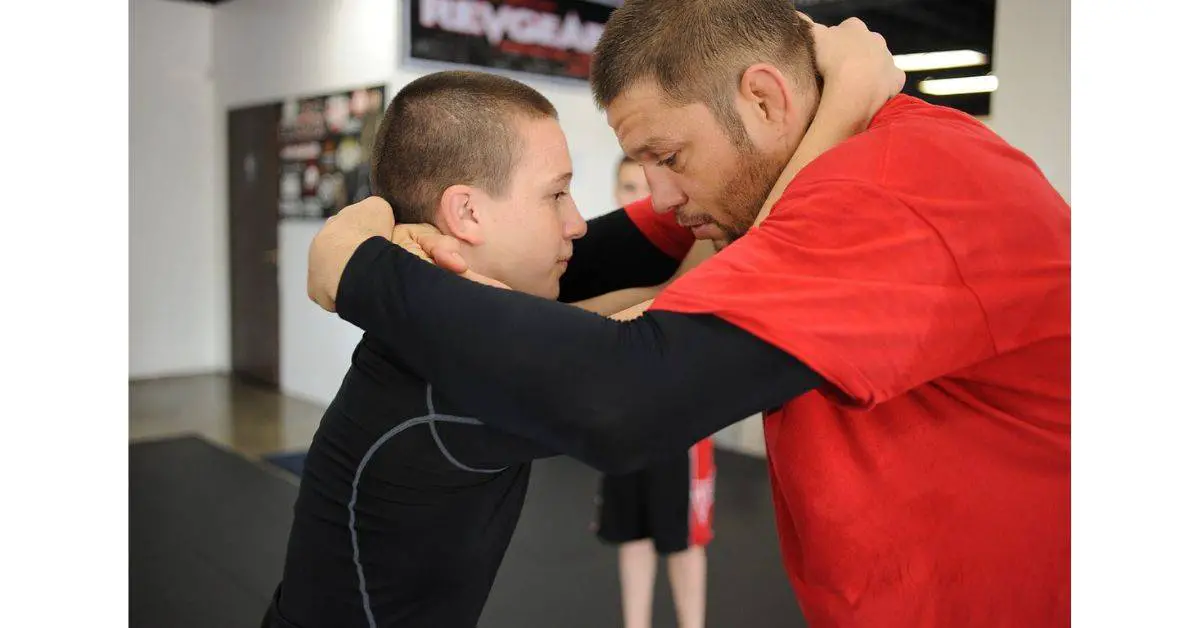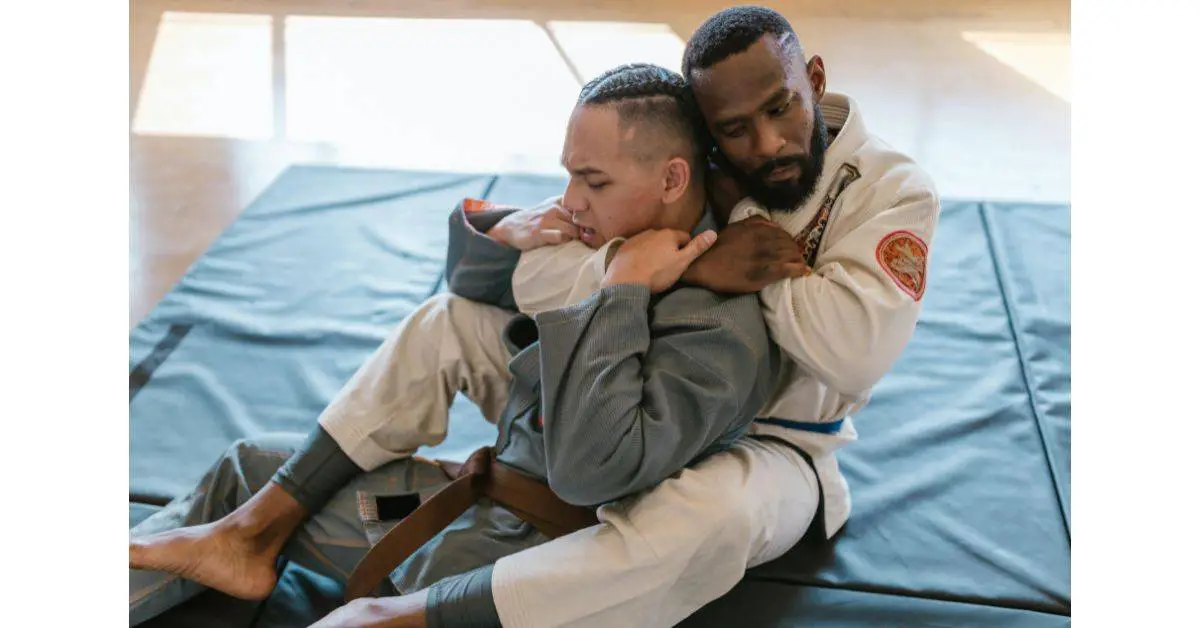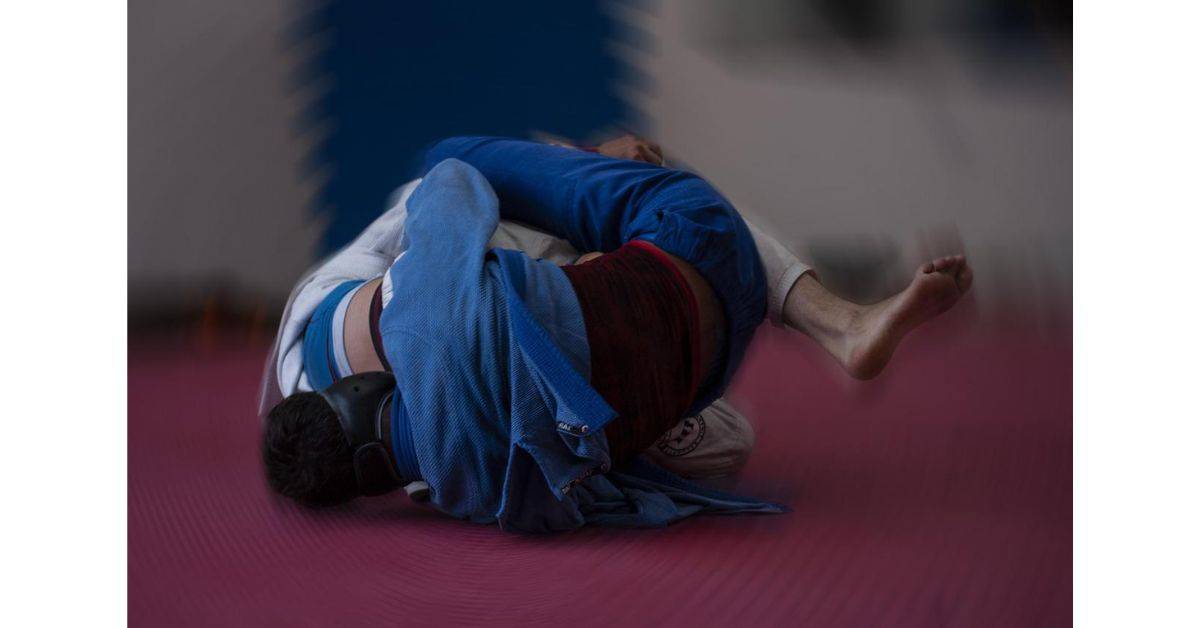BJJ, often known as Brazilian Jiu-Jitsu, is one of the most widely practiced martial arts worldwide. The grappling technique has been compared to a human version of chess, since it requires users to learn hundreds or thousands of different actions and sequences, from joint locks to chokeholds. Like chess, an intensive study is necessary to master the skill, but how challenging are the fundamentals to learn?
Learning Brazilian Jiu-Jitsu isn’t as difficult if you dedicate yourself and show up to training consistently. At first, training will be easier because it’ll focus on the basics of the basics. Thus, your instructors won’t force you to deep dive into deep waters as soon as you start training.
Few people who begin BJJ will advance beyond the first belt rank, and even fewer will achieve a black belt.
Because no matter how athletically gifted or eager you are to learn, BJJ training is exceedingly challenging to persist through, in the end, there are no practical methods to get around this discomfort and hardship. This is why learning this technique is so rewarding.
Perhaps you’re considering enrolling in a BJJ class for the first time; in that case, you should read this article well to learn why BJJ is challenging. Also, don’t look for shortcuts in BJJ, as there are none.
However, there’s a bright side. Once you start training, you’ll fall in love with this remarkable art of grappling. BJJ is, truly, an elegant martial art designed to help you progress in life. After a few sessions, you’ll most likely get addicted to it.
Why is BJJ so difficult?
Learning BJJ is quite challenging, but you might wonder what is so difficult about BJJ. Here are some reasons why BJJ is so difficult;
#1 – BJJ is an aerobically demanding sport.
BJJ students expend a lot of energy trying to make moves against a resisting opponent during live rolling, rigorous drilling, and most definitely during competition—or at least at a very fast speed during drilling.
BJJ’s cardiovascular activity is just as demanding as any other strenuous aerobic activity. The cardiovascular demand for live BJJ training is undoubtedly a challenging feature of engaging in the “gentle art,” even though it is good for aerobic health and mental strength.

#2 – BJJ can be complex
Since BJJ is a constantly changing art, few players can truly claim perfect mastery. You can be an expert in some battle sequences, while merely knowing the basics of others. An example of this would be being an excellent guard passer but knowing less about leg locks. BJJ complexity is another factor contributing to the extreme difficulty of practicing BJJ over an extended period.
#3 – Brazilian Jiu-Jitsu tests your ego.
BJJ is complex because BJJ will test your ego regardless of your current level. You must learn to let go of attachments to winning and simply embrace the art for what it is. It’s easy to write off losses as a beginner, but the ego testing gets more severe as you get better.

#4 – Getting better at BJJ takes a lot of time.
The more you can train, the better you will get in a given timeframe. For many people, carving out that time on most weeks of every year for the next 15-20 years is not worth getting better at grappling.
#5 – Physical pains from impacts
When it comes to impact and injuries, Jiu-Jitsu is physically unpleasant. Full-contact grappling involves multiple effects on the floor from various body parts, including the knees and elbows. Live grappling’s unpredictable nature leads to unexpected injuries like fingers in the eyes or other mishaps.
The bright side
And still, BJJ is suitable for everyone, regardless of your age, size, or current shape. In fact, I wrote an article on why the art of grappling has no age limit—and I encourage you to read it.
Eventually, if you’re reading this article, you want to improve yourself. Thus, it’ll be best if you start training as soon as possible, regardless of all the hardships and difficulties training may provide you with.
Frankly, I can’t look back anymore, ever since I started to do martial arts. They’ve completely changed my life, although I felt exactly like you do now.
If there’s a single piece of advice I want you to take is that you can enjoy the benefits of martial arts right now. As a result, don’t hesitate to start training—starting from today.
Is BJJ beginner-friendly?
BJJ is difficult for inexperienced individuals with large egos because a smaller, older, less-experienced opponent will submit them no matter how big and strong they are. The ego suffers greatly, and if you don’t know how to adjust and begin accepting this enlightening, humble experience mentally, there’s a good possibility you’ll give up.
BJJ is beginner-friendly because it’s suitable for people who don’t know anything about the art. The first session for every trainee are about the basics of the basics. And, as a result, they’ll be more than suitable for inexperienced individuals who want to learn more about the art of ground grappling.

Aside from ego, there is also the physical challenge; sparring is a requirement of BJJ, and it happens every time you train. Your opponent will be right in front of you and prepared to choke the living hell out of you; there are no katas or fighting drills against fictitious opponents.
Of course, there is the flow rolling, but 99 times out of 100, you will need to employ every one of your strengths to get through the sparring match against more prominent and skilled opponents.
But, BJJ will be worth it in the end. When all is said and done, if you’re reading this article, you want to improve your physical and mental selves. Although it won’t be a walk in the park, you will be able to find training enjoyable.
Nevertheless, if you persevere over the first three months, you will experience an inner shift, making BJJ worthwhile.
What does BJJ training include?
Various Jiu-Jitsu facilities, gyms, or schools may arrange their training differently. But the typical BJJ training will include the following:
- Warm-ups (10 – 15 minutes): These can include stretching, a quick sprint around the mat, and solo or pair exercises like squats, forward- and backward rolls, hip escapes, and other things.
- Drills and technique (30 – 40 minutes): The instructor will teach a technique or set of skills, typically in a sequence, for several weeks or months. After learning the process and practicing it with a partner, instructors give students additional instructions, setups, and finishes for the technique, which they continue to practice with their partner.
- Sparring (15 – 30 minutes): After starting with their first partner in the gym, students begin sparring or “rolling” in regular rounds (often lasting five minutes each). Submissions signify a reset until the time expires because they don’t score sparring rounds.
- Relaxation (5 – 10 minutes): Some gyms also have a cool-down period after the sparring rounds.
How frequently should beginners train BJJ?
Many beginners either fall in love with the sport and decide to train daily, or are unsure if they want to train or master BJJ. Most are simply experimenting and plan to practice only once or twice a week.
After only a few months of training, those in the first category risk becoming hurt or burning out. The second group is at risk of losing motivation, since they don’t work out frequently enough to develop muscle memory and retain techniques.
Training three times per week strikes the perfect balance between preventing burnout and achieving quick results for many people. Every session allows you to spar aggressively. You’ll be able to recall everything you learned in the previous lesson and improve your timing and reflexes.
Although, It primarily depends on your age, ambitions, and other factors. A younger person can heal faster than someone older. So, you must strike the right balance between recalling and recuperating.
Final words
People say BJJ is for the weak of heart, and the journey of a BJJ student can be challenging. Know that everyone’s journey is different, and people develop at their rate in any martial art, whether BJJ, judo, Muay Thai, or karate.
A mind stimulated by the desire to study a highly effective, well-respected martial art can give you a fresh perspective on life. Sometimes, people could all stand to profit from being humbled. If you’re prepared to take the chance, BJJ can provide you with great joy and additional advantages.
So, never worry excessively about how other people are doing or how much time they invest compared to you. Everything else will fall into place if you keep your attention on what you are doing on the mats!
If you enjoyed reading this article, I encourage you to follow the link to another article of mine on ways to train BJJ at home. It’ll help you save money in the long-term!

